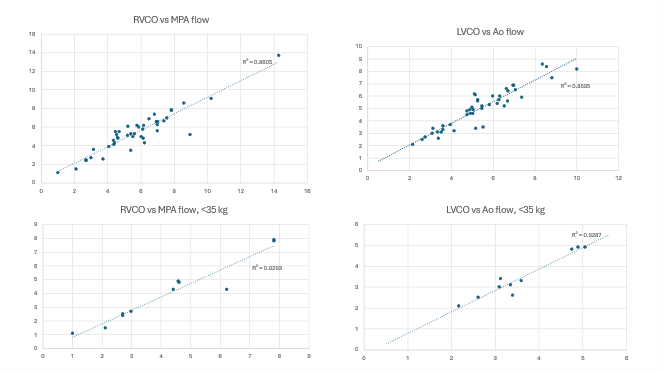Rapid Fire Abstracts
Comparison of Cardiac Output and Phase Contrast Flows using Free breathing Deep Learning-based reconstructed cines (RF_TH_174)
- WL
William Long, MD
Fellow
Children Hospital of Pittsburgh - WL
William Long, MD
Fellow
Children Hospital of Pittsburgh - AS
ALESSANDRO SCOTTI, PhD
MR Clinical Scientist
GE HealthCare - KF
Kyoko Fujimoto, PhD
Director, Research and Scientific Affairs
GE HealthCare 
Tarek Alsaied, MD
Assistant Professor of Pediatrics
Children's Hospital of Pittsburgh- AC
Adam B. Christopher, MD
Assistant professor
UPMC Children's Hospital of Pittsburgh .png)
Laura Olivieri, MD
Associate Professor of Pediatrics
Children's Hospital of Pittsburgh of UPMC
Presenting Author(s)
Primary Author(s)
Co-Author(s)

Background:
Traditional CMR imaging is logistically complex in pediatric patients given the need for cooperative breath holds, and often requires anesthesia for reliable assessment of anatomy, volumes, and flow. Recent advances in MR acquisition with free breathing deep learning (DL) reconstruction have enabled single RR cine images clinically routine in adults, however, in smaller children with faster heart rates their relative accuracy is unknown. Our aim was to compare cardiac output measurements from single RR cine imaging with DL reconstruction to vessel flow from standard phase contrast imaging.
Methods:
With IRB approval, all children < 18 y referred for a clinical CMR at 1.5T (GE, Milwaukee, WI) who had single RR cines and standard phase contrast performed as part of their clinical study were included. Volumetry and flow measurements were performed according to the lab clinical standard. Right and left ventricular cardiac output (RVCO, LVCO) were compared to forward flow in the pulmonary artery and ascending aorta (AAO, MPA) in patients without significant atrioventricular valve regurgitation or ventricular shunting. The ratio and difference of the RVCO and LVCO were compared to AAO and MPA forward flows respectively, and Pearson correlations and student’s t-test were assessed.
Results:
Fifty-four patients (age 12.6±3.8y, weight 50.2±23.1 kg, heart rates 52-112 bpm) with simultaneous cardiac output and flow measurements were included. There was a very high degree of correlation between both LVCO and AAO flow (R2=0.8595, p< 0.02) and RVCO and MPA flow (R2=0.8605, p< 0.05). Sub analysis of smaller patients < 35 kg (n=17) demonstrated a trend toward very strong correlations, albeit in a smaller group (0.9293 for RVCO vs MPA, and 0.9287 for LVCO vs AAO, both p > 0.05).
Conclusion: : Free breathing single RR cine images with DL reconstruction are a reliable method of obtaining measurements of cardiac output when compared to traditional measures of cardiac output using flow in children. Pediatric patients in particular may benefit from this technology with less dependence on general anesthesia for diagnostic CMR
Correlations between volumetry-derived ventricular cardiac output using 1RR deep learning reconstructed cines and corresponding phase contrast flow. Particularly high correlations are noted in the subgroup < 35 kg.

